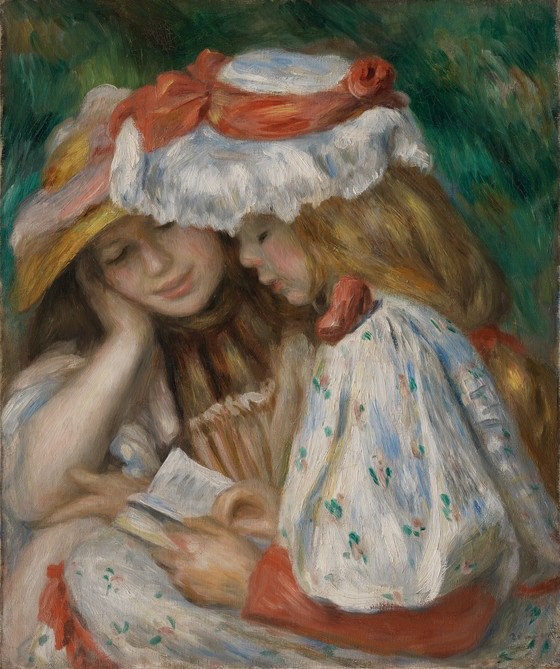Blast from the Past: This entry first posted July 23, 2017 and re-posted February 27, 2021. This blog posting seemed timely. Many teachers have cut back on the amount of reading instruction due to COVID-19, online teaching, and social distancing. That does not mean that teachers have proportionally trimmed their lessons, just covering less ground with each component of literacy. No, they have tended to drop whole sections of their lessons – and fluency seems to be one that was easy for many to leave behind. I think that repeated reading and similar approaches can continue to work even in our current teaching conditions.
Teacher question:
Any link to how the 'Repeated Reading' strategy works? How long text can be repeated, how long can text be, depends on accuracy?
Shanahan response:
I received this note while in Ireland, and it is such a basic question that I was gobsmacked by it. These are just the kinds of queries that I love to respond to on this site: Topics that many teachers assume they know about, but that often turn out to be full of surprises.
The idea of repeated reading emerged in the late 1970s… as a result of the writings of S. Jay Samuels (1979) and Carol Chomsky (1978). They found, in separate studies, that engaging kids in repeatedly reading texts aloud improved reading ability. It was kind of a no-brainer that such approaches were beneficial by the time the National Reading Panel (NICHD, 2000) concluded that they were (that portion of the report was written by Jay Samuels and me—and even he was a bit taken aback by how that work had proceeded since when he’d first written about it).
Multitasking is essential to good reading.
Scientific studies (e.g., LaBerge & Samuels, 1976) revealed the importance of “automaticity” to reading. Readers have to be able to decode without thinking about decoding. We only have so much thinking space available. The more cognitive space devoted to figuring out words, the less available to grasp the text's meaning.
Samuel’s idea of repeated reading was that it could help readers to gain automaticity. He thought it would help readers to master the art of reading words accurately and with sufficient speed.
When children are learning to read, they initially struggle to read words accurately. That is very common in Grade 1. These students then often gain mastery over accuracy at the expense of speed—such accurate but slow reading tends to emerge in Grade 2 (Morris, 1999). Samuels’ goal was to build accuracy and speed to a point where comprehension would be possible. The more efficient the reading of the words, the more that readers' attention could be turned to meaning.
Carol Chomsky (1978) had a similar notion of the problem. She thought there was a subgroup of poor readers who “knew” phonics—that is, they knew the letters and sounds and could decode words reasonably well. However, these strugglers couldn't apply these skills fluently during the reading of a text.
Chomsky believed that this special group of readers might benefit from reading texts aloud repeatedly since it would give them essential practice in applying those known skills.
Samuels and Chomsky both reported research studies that had positive results, as have many other researchers since that time.
What specifically is “Repeated Reading?”
Repeated Reading is a particular method proposed by S. Jay Samuels to develop decoding automaticity with struggling readers. In this approach, students are asked to read aloud short text passages (50-200 words) until they reach a criterion level of success (particular speed and accuracy goals).
However, research shows there are many ways that teachers can successfully exploit the idea repeated oral reading, so I’ll talk about “repeated reading” here (rather than Repeated Reading).
What are some of those other ways of doing repeated reading?
In Chomsky’s scheme, the kids listened to audiotapes of a text and then worked on making their own tapes—trying to match the quality of the originals. Reading while listening or echo reading works too, as does Radio Reading (in which kids work with scripts—making the oral reading purposeful), and Neurological Impress (don’t ask).
All of these schemes include oral reading. They also all include reading the texts multiple times (either to a particular quality criterion, such as a particular number of words correct per minute—or a set number of repetitions, usually 3).
What's the goal of such instruction, to get kids to read fast?
No, the goal is to get students to read the author’s words accurately, to read texts at about the speed of oral language, and to make this reading sound like language (pausing in the right places so that ithe text makes sense).
What is the outcome of such practice?
Repeated reading usually leads to better reading performance. The biggest payoffs tend to be with word reading, but it also has been found to improve oral reading fluency and reading comprehension (the most frequently reported area of improvement). This comprehension finding surprised Jay Samuels. Remember the comprehension impact should be indirect--through word reading improvement. He was shocked that so many researchers failed to include word reading measures in their studies, even though they always tested reading comprehension. There was a very good chance that such studies would have found no differences in comprehension and would have, therefore, concluded that repeated reading didn’t work. Fortunately, the comprehension payoffs were large enough and consistent enough that it didn't turn out to be a problem.
Were there special kids who needed repeated reading?
The research suggests that part of Chomsky's theory was wrong. Studies of repeated reading sometimes aimed at these special "average phonics skills but low reading" kids, and other times they just focused on all readers in regular classrooms. The results were exactly the same: repeated reading improved reading ability across the board.
How many re-readings should kids be doing?
The research suggests that three readings should be sufficient so I would limit it to that. Three readings and it is time to move on to another text.
How long should the passages be?
Samuels used passages of 50-200 words; with the shorter texts used with the students with the lowest reading abilities. That makes sense to me. In classroom reading practice, that would be like a page or two in a primary grade reader. It is important to keep the texts brief for this work so that when students reread, memory becomes a useful scaffold. The longer the text, the harder to carry over what was figured out on the first reading. (Joe Torgesen has emphasized the importance of using texts that share a lot of vocabulary. That way, when a student improves with one text, it is certain to immediately carry over to the next.)
How challenging should the texts be?
The texts used for fluency practice should be at students’ so-called “frustration levels.” If students don’t make many mistakes with a text (say 10 or more per hundred words), then the repetition is unlikely to improve their reading very much.
What about integrating comprehension work into this kind of fluency practice?
Some of the repeated reading routines have included a comprehension component, such as asking students a different question at the conclusion of each reading or having the student complete some kind of comprehension task each time. Other approaches do not do this. The research says that repeated reading pays off, whether there is a comprehension step or not. I'd include one under the well-n=known scientific precept: “It couldn’t hurt.”
How can a teacher listen to a whole classroom full of kids?
I recommend paired reading. Have one youngster read to another. Then they switch. While this practice is going on, the teacher circulates among the students listening to several one-at-a-time and giving feedback.
What about silent reading?
Silent reading should also take place regularly—I try to provide both an oral reading fluency period and a reading comprehension period daily. In the latter, except with beginners, the reading is silent. There are also a couple of studies in which kids read silently while a computer monitored their reading that has led to fluency improvement (Rasinski, Samuels, Hiebert, Petcher, & Feller, 2011).
What about round robin reading? We do “popcorn” in my class?
Schemes in which one child reads aloud and the rest of the students wait their turn are lousy. They don’t allow much oral reading; simply not enough practice to foster improvement. This is because only one child reads at a time. Second, repeated reading is very rare in round robin, making learning unlikely. Third, you may get pushback; kids who read poorly may refuse to read—something that never occurs when everyone is doing the reading.







Comments
See what others have to say about this topic.